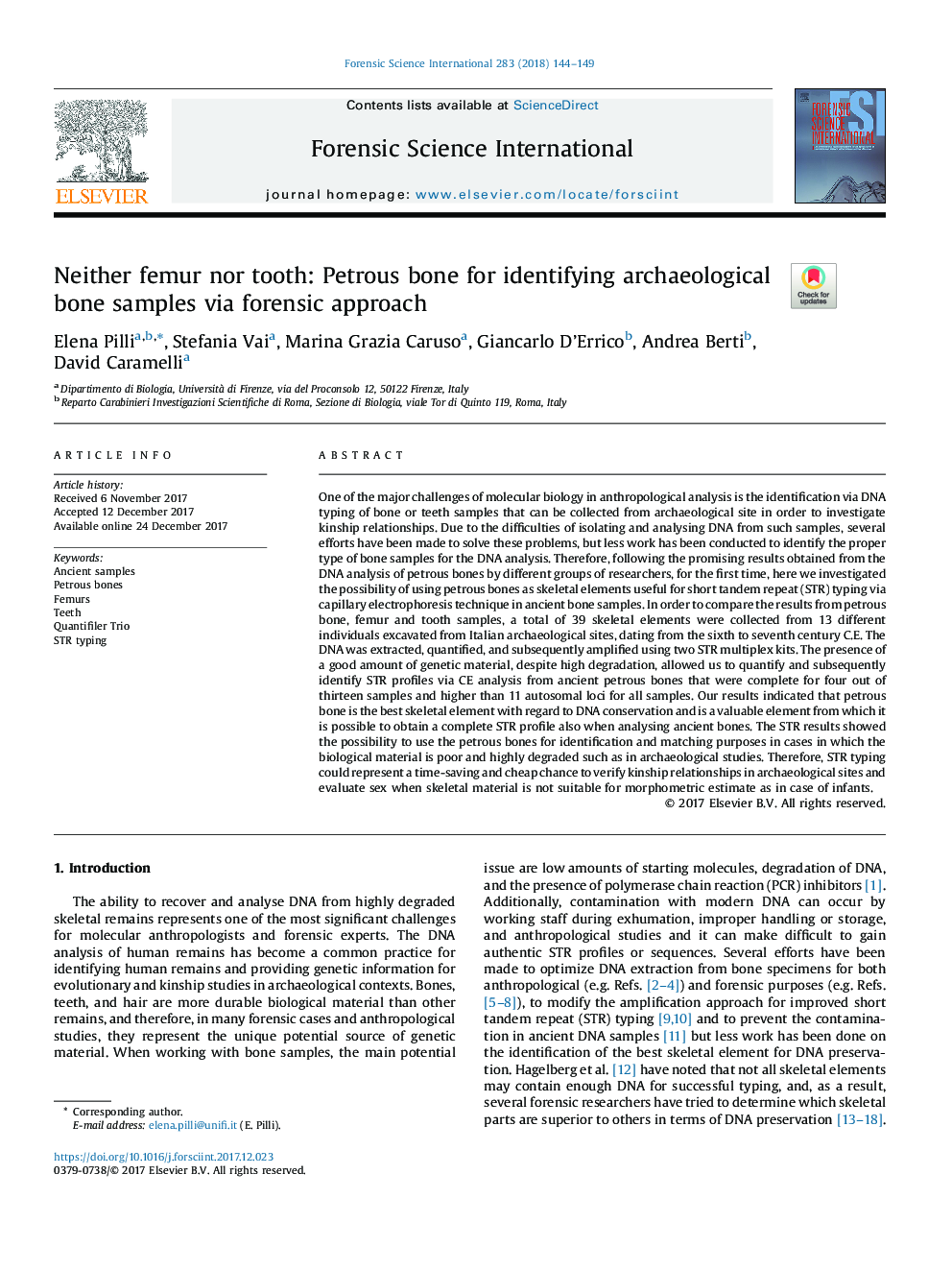| کد مقاله | کد نشریه | سال انتشار | مقاله انگلیسی | نسخه تمام متن |
|---|---|---|---|---|
| 6551312 | 1421967 | 2018 | 6 صفحه PDF | دانلود رایگان |
عنوان انگلیسی مقاله ISI
Neither femur nor tooth: Petrous bone for identifying archaeological bone samples via forensic approach
ترجمه فارسی عنوان
هیچ استخوان ران و استخوان استخوانی برای شناسایی نمونه های باستان شناسی استخوان از طریق روش قانونی
دانلود مقاله + سفارش ترجمه
دانلود مقاله ISI انگلیسی
رایگان برای ایرانیان
کلمات کلیدی
موضوعات مرتبط
مهندسی و علوم پایه
شیمی
شیمی آنالیزی یا شیمی تجزیه
چکیده انگلیسی
One of the major challenges of molecular biology in anthropological analysis is the identification via DNA typing of bone or teeth samples that can be collected from archaeological site in order to investigate kinship relationships. Due to the difficulties of isolating and analysing DNA from such samples, several efforts have been made to solve these problems, but less work has been conducted to identify the proper type of bone samples for the DNA analysis. Therefore, following the promising results obtained from the DNA analysis of petrous bones by different groups of researchers, for the first time, here we investigated the possibility of using petrous bones as skeletal elements useful for short tandem repeat (STR) typing via capillary electrophoresis technique in ancient bone samples. In order to compare the results from petrous bone, femur and tooth samples, a total of 39 skeletal elements were collected from 13 different individuals excavated from Italian archaeological sites, dating from the sixth to seventh century C.E. The DNA was extracted, quantified, and subsequently amplified using two STR multiplex kits. The presence of a good amount of genetic material, despite high degradation, allowed us to quantify and subsequently identify STR profiles via CE analysis from ancient petrous bones that were complete for four out of thirteen samples and higher than 11 autosomal loci for all samples. Our results indicated that petrous bone is the best skeletal element with regard to DNA conservation and is a valuable element from which it is possible to obtain a complete STR profile also when analysing ancient bones. The STR results showed the possibility to use the petrous bones for identification and matching purposes in cases in which the biological material is poor and highly degraded such as in archaeological studies. Therefore, STR typing could represent a time-saving and cheap chance to verify kinship relationships in archaeological sites and evaluate sex when skeletal material is not suitable for morphometric estimate as in case of infants.
ناشر
Database: Elsevier - ScienceDirect (ساینس دایرکت)
Journal: Forensic Science International - Volume 283, February 2018, Pages 144-149
Journal: Forensic Science International - Volume 283, February 2018, Pages 144-149
نویسندگان
Elena Pilli, Stefania Vai, Marina Grazia Caruso, Giancarlo D'Errico, Andrea Berti, David Caramelli,
